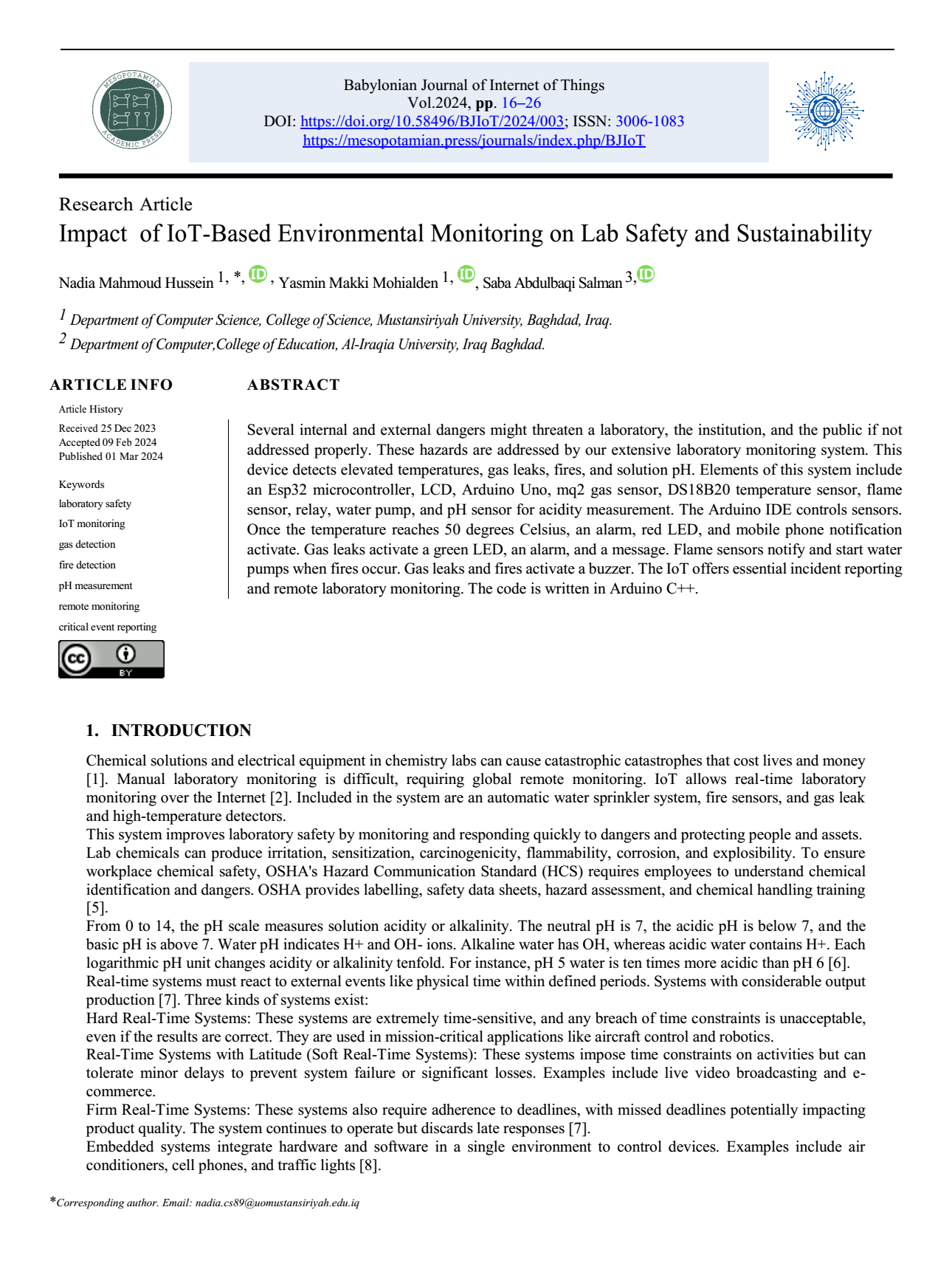Impact of IoT-Based Environmental Monitoring on Lab Safety and Sustainability
Main Article Content
Abstract
Several internal and external dangers might threaten a laboratory, the institution, and the public if not addressed properly. These hazards are addressed by our extensive laboratory monitoring system. This device detects elevated temperatures, gas leaks, fires, and solution pH. Elements of this system include an Esp32 microcontroller, LCD, Arduino Uno, mq2 gas sensor, DS18B20 temperature sensor, flame sensor, relay, water pump, and pH sensor for acidity measurement. The Arduino IDE controls sensors. Once the temperature reaches 50 degrees Celsius, an alarm, red LED, and mobile phone notification activate. Gas leaks activate a green LED, an alarm, and a message. Flame sensors notify and start water pumps when fires occur. Gas leaks and fires activate a buzzer. The IoT offers essential incident reporting and remote laboratory monitoring. The code is written in Arduino C++.
Article Details
Issue
Section

This work is licensed under a Creative Commons Attribution 4.0 International License.
